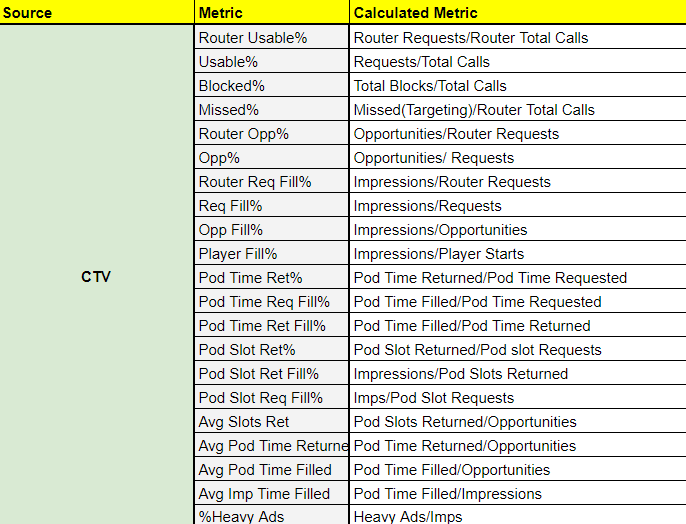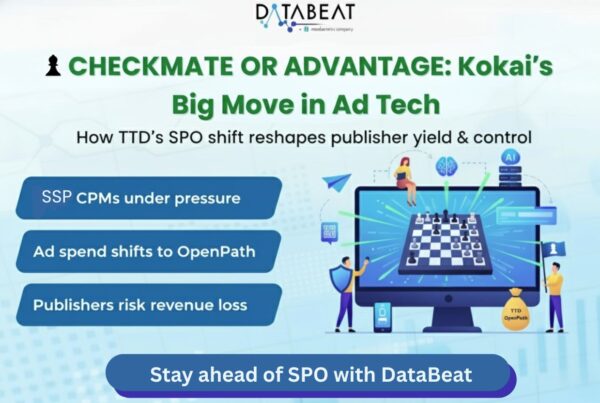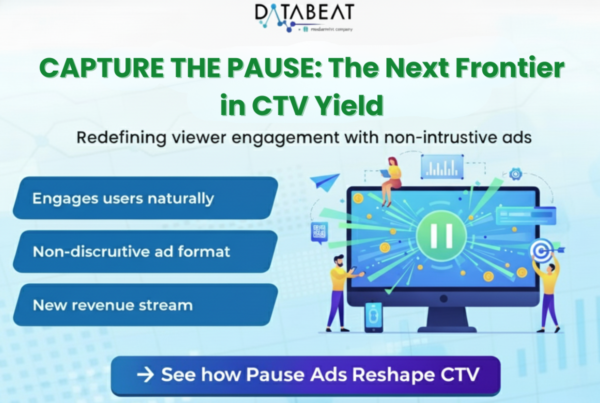
What is CTV
CTV (Connected TV) refers to television sets that are connected to the internet via integrated Smart TV capabilities or external devices such as streaming media players, game consoles, or set-top boxes.
Users can access a wide range of digital material through a variety of online channels, including subscription-based services like Netflix, Hulu, and Amazon Prime Video, free ad-supported platforms like YouTube, and live TV streaming services like Sling TV and Hulu + Live TV.

New Future of Programmatic Advertising
Connected TV (CTV) is increasingly seen as the future of programmatic advertising due to several key factors:
- Targeted Advertising: CTV platforms enable advertisers to tailor ads based on viewers’ demographics, interests, behaviors, and viewing habits, ensuring relevance and boosting engagement.
- Reach and Scale: With a large and growing audience of cord-cutters and cord-nevers shifting from traditional TV to streaming services, CTV provides advertisers with broad reach and scalability.
- Data-driven Insights: CTV advertising offers valuable data and insights into viewership patterns, ad performance, and audience behavior, empowering advertisers to optimize campaigns and measure effectiveness in real-time.
- Cross-Device Targeting: CTV allows advertisers to reach consumers seamlessly across multiple devices, including smart TVs, smartphones, tablets, and desktop computers, ensuring a consistent message across screens.
- Premium Content and Ad Experience: CTV platforms feature high-quality, premium content from leading broadcasters and streaming services, enhancing ad experiences and driving brand engagement with immersive content.
Programmatic Advertising in CTV?
- Auction Dynamics: Programmatic advertising in CTV operates through real-time auctions where ad inventory is bought and sold. When a viewer accesses content on a CTV platform, ad space is auctioned off to advertisers via automated processes.
- Real-Time Bidding (RTB): Advertisers participate in these auctions through Demand-Side Platforms (DSPs), where they bid on available ad impressions in real-time. Bids are based on various factors such as audience demographics, viewing habits, and bid prices are submitted swiftly, often within milliseconds.
- Audience Targeting: Advertisers leverage sophisticated targeting capabilities to reach specific audience segments. This includes demographics, interests, behaviors, and viewing habits, ensuring ads are delivered to relevant viewers for increased engagement and effectiveness.
- Data-driven Insights: Programmatic CTV advertising provides advertisers with actionable data and insights into ad performance, viewer behavior, and campaign effectiveness. This data enables real-time optimization of campaigns and targeting strategies for improved ROI.
- Ad Formats: Various ad formats are available in programmatic CTV advertising, including pre-roll, mid-roll, and post-roll ads, as well as interactive and immersive ad experiences. Advertisers have the flexibility to choose the format that best aligns with their campaign objectives and audience preferences.
- Unique creatives : Unique creatives for CTV include interactive storytelling, live streaming events, 3D animation, AR product demos, contextual targeting, branded entertainment, multi-screen experiences, voice-activated ads, and gamified experiences. These leverage the platform’s capabilities, offering immersive, personalized, and engaging ad formats for optimal viewer interaction and brand impact.
- Private Marketplaces (PMPs): CTV publishers may offer ad inventory through private marketplaces, allowing for negotiated deals with select advertisers. PMPs provide advertisers with access to premium inventory and increased control over targeting and pricing.
- Ad Fraud Prevention: Programmatic CTV platforms employ robust measures to combat ad fraud, such as invalid traffic detection, verification tools, and adherence to industry standards like ads.txt and app-ads.txt. These measures ensure advertisers’ budgets are spent on legitimate ad impressions, safeguarding campaign effectiveness and ROI.
- Transparency and Reporting: Advertisers benefit from transparency throughout the programmatic advertising process, including bid requests, bid responses, and auction outcomes. Detailed reporting and analytics enable advertisers to track campaign performance, optimize strategies, and make data-driven decisions.
- Header Bidding: Header bidding, or pre-bidding, is a technique used in CTV advertising where multiple demand sources can bid on ad impressions simultaneously before they are served. This increases competition and revenue potential for publishers.
CTV Advertising SetUp
- Ensure the Supply and Demand through the CTV Platforms
- Supply Tag
- Supply tag in CTV advertising indicates the availability of ad inventory on CTV platforms. It is embedded within the publisher’s content and triggers ad requests to ad exchanges.
- The supply tag contains essential information such as the publisher’s ID and targeting parameters.It facilitates the auction process for ad impressions by signaling available inventory.
- Demand Tag
- The demand tag is submitted by advertisers in CTV advertising.It includes bidding information such as bid price, targeting criteria, and creative assets.
- The demand tag participates in real-time bidding auctions for ad impressions.It specifies the advertiser’s ID and the URL of the ad creative.
- The demand tag enables advertisers to bid for ad impressions on CTV platforms, participating in the auction process.
- Supply Tag
- Ad Placements: Define the specific placements within the CTV content where ads will be served. This includes specifying ad positions such as pre-roll, mid-roll, or post-roll, as well as ad insertion points within the content stream.
- Targeting Criteria: Set up targeting criteria to reach your desired audience effectively. This may include demographic targeting (age, gender), geographic targeting (location), device targeting (device type, operating system), content targeting (genre, keywords), and audience segments.
- Ad Formats and Creative Assets: Choose the ad formats and upload the creative assets for the campaign. Ensure that the ad creative meets the specifications and requirements for CTV advertising, including video resolution, file size, and duration.
- Frequency Capping: Implement frequency capping to control the number of times an individual viewer is exposed to your ads within a specific time period. This helps prevent overexposure and viewer fatigue while optimizing campaign reach and effectiveness.
- Bid Strategies and Pricing: Define your bidding strategy and set bid prices for participating in real-time auctions. Adjust bid prices based on factors such as audience targeting, ad placement, and campaign goals to optimize performance and maximize ROI.
- Ad Trafficking and Tag Implementation: Traffic the ads and implement the necessary tags within the SpringServe UI. Ensure that supply tags are correctly implemented on the publisher’s side, and demand tags are configured with the appropriate bidding parameters and targeting criteria.
- Reporting and Analytics: Set up reporting and analytics to monitor campaign performance and track key metrics such as ad impressions, clicks, viewability, completion rates, and conversion actions. Use these insights to evaluate campaign effectiveness and make data-driven optimizations.
- Ad Verification and Brand Safety: Implement ad verification and brand safety measures to ensure ad compliance and protect your brand reputation. Use verification tools to detect and prevent ad fraud, ensure ad viewability, and maintain brand safety standards.
- Launch and Optimization: Once all setup steps are completed, launch your CTV advertising campaign in the SpringServe UI. Continuously monitor campaign performance and make optimizations based on real-time data and insights to maximize campaign effectiveness and ROI.
CTV Terminologies, KPI’s and Equations (In Reference to SpringServe)
- Ad Pod CTV is a sequence of consecutive ads served within a single commercial break or ad insertion opportunity during streaming content.
- Viewership Minutes : Refers to the total time viewers spend watching content on internet-connected devices like smart TVs and streaming media players. It’s a key metric for understanding content popularity, engagement, and advertising effectiveness in the digital streaming landscape.










